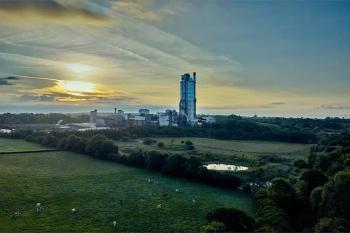
Danger of reverse rotation of compressors
Phase 1 of a process plant started up 2005 with six compressors. Design pressure ratio for LP ,MP, HP was about 3 for each stage (Pd / Ps). Design overall pressure ratio for the machine was about 28 (Pd / Ps). The volume of suction vessels LP, MP, HP was more than 50 m3 for each.
Phase 2 started in 2009. Four compressors were put into operation with similar design pressure ratio & overall pressure ratio as phase 1. Triple the volume of suction vessels compares to phase 1.
This article is based on a case study presented by Amr Gad at the 2011 Turbomachinery Symposium.
Phase 1 unit configuration: Fixed speed electric motor, gear box and compressor. Compressor rated at: 3.7MW and motor was rated at 4.2 MW. Gear box speed was 1480 / 10258 RPM. Compressor operating speeds was 10,258 RPM. The seal configuration was unidirectional dry gas seal. The compressor bearing was tilt pad self-equalizing bearing while the motor had a cylindrical sleeve bearing. Gear box was double helical.
Reverse rotation happened since the commissioning of the machines. However, they were only discovered after 18 month of units operations. Late discovery was due to no reverse rotation detection system installed. No prior experience in-house with reverse rotation in this type of process configuration.
Root Cause Failure Analysis findings: Reverse hydraulic flow due to large amount of entrapped hydrocarbon volume in the piping and suction vessels of the MP & HP sections.
Hydraulic flow occurred after 10-15 seconds from a stop command till compressor coast down to zero RPM speed. Hydraulic flow during the reverse rotation from zero speed till 5000 RPM and back to zero again within 4 to 6 minutes.
In the speed trend plot, it was shown that the unit stopped very fast after stop command. Unit speed ramped up again in reverse rotation to almost 5,000 rpm for the compressor. After speed reached 5,000 RPM, the compressor coasted down again to zero speed in about 4-6 minutes. This phenomena was repeated each time the machine stopped.
Existing unidirectional dry gas seal were not guaranteed for such modes of operations as per OEM guide lines. Lube oil system design did not support reverse rotation with total electric power black out, as auxiliary and emergency pumps are AC driven and and the overhead tank is designed for only 3 minutes.
No detailed study conducted by OEM to confirm impacts on various machine components such as impeller vanes, diffusers, labyrinth seals etc.
Mitigating Actions. For phase 2 compressors, in the interim, the I&C for the ITV’s of the MP & HP was modified so as to fully close during machine stop. Final modification was to install check valves at the suction of the LP, MP and immediately after the discharge.
Lessons Learned
- Dynamic simulation requirements for such process configurations
- Mitigating actions to eliminate reverse rotation should consider
- ITV modification for complete closure during shutdown
- Installation of check valves at suction lines
- Machines construction should include mitigating design
- Bidirectional seal will eliminate risk from reverse rotation
- Center pivot for tilting pad can accommodate reverse rotation better than offset pivot design
- API standard is for 3 minutes run down tank design and so, emergency DC pump is an advantage.
Reverse rotation phenomena have potential to occur in the LPG refrigeration cycles. Reverse rotation phenomena is more common in the motor-driven compressors with relatively low machine inertia. Detailed surveillance of coast down speed trends of new units is recommended to ensure detection of Reverse Rotation. Reverse rotation phenomena may not increase vibration or axial movements above alarm values.
Newsletter
Power your knowledge with the latest in turbine technology, engineering advances, and energy solutions—subscribe to Turbomachinery International today.





